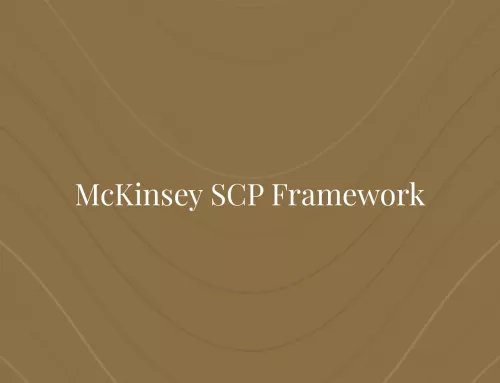The Fishbone diagram was developed by Dr. Kaoru Ishikawa, a Japanese quality control statistician in the 1960s, with an aim to aid employees avoid solutions that merely address the symptoms of a much larger problem.
Objective
In our day-to-day lives as well as professional careers and businesses, no matter what line we are in, sometimes things get wrong, and we are faced with problems and challenges. Sometimes, the issues would be easy to identify and resolve. But more often than not, problems are complex and require extensive detailing. And here is where the Fishbone diagram comes into the picture. It is an important tool used to find the root cause or causes for a problem rather than directly jumping onto the immediate solution which might later be incorrect. In this way, the problem can be resolved permanently and in the first go itself.
The Fishbone diagram serves the following purposes:
- Identify root causes of a problem
- Product development to fulfill the requirements in the current market
- Identify bottlenecks and areas of improvement in processes and operations
The model
The Fishbone diagram is one of the seven quality control tools and is used in the analyze phase of the DMAIC (Define, measure, analyze, improve and control) approach. It takes its name from the fact that it resembles the shape of a fish skeleton.

The head of the fishbone diagram represents the problem statement that we want to investigate whereas its back connects to spines representing the primary causes. These primary causes are then branched out into secondary causes and so on. The best way to form a fishbone diagram is by brainstorming collectively in teams. These teams should preferably be cross-functional, involving personnel from diverse fields so that maximum areas of potential causes are covered.
While doing so, the primary causes assist in focusing the discussion on a particular group of causes rather than trying to consider all possible factors at the same time. The Fishbone diagram goes by a number of other names like the cause-and-effect diagram, Ishikawa diagram, and Herringbone diagram.
There are some generalized models used to begin with providing us with primary causes and vary depending upon the industry or domain the problem lies in.
- 6M’s (Manufacturing): The 5M model is used generally when dealing with a problem in the manufacturing industry. The 5 M’s include man, machine, material, mother nature, method and measurement.
- 8P’s (Marketing): The primary causes in this model are product, place, price, promotion, people, process, physical evidence and performance.
- 4S (Service industry): This includes four categories of primary causes i.e., surroundings, suppliers, systems and skill.
5 Whys
In order to trace back to the root cause(s), we use a technique called 5 Whys. It is basically a technique wherein we interrogate iteratively by asking for each primary cause, why did it occur, five times subsequently. Thereafter, we try to find the corrective actions for each level so as to ensure that the problem doesn’t occur again. It was originally developed by Sakichi Toyoda in the 1930s to revive the Toyota Production System (TPS). Let us understand it using an example.
Suppose our company’s website is down and we need to get the site up and running ASAP. We would try to get to the root cause using 5 Whys in the following way:
1st Why: Why did the site go down?
Reason: It ran out of memory.
Corrective action: Get the site up and running again.2nd Why: Why did it run out of memory?
Reason: Because it was incorrectly configured.
Corrective action: Create an SOP to verify configuration before every update.3rd Why: Why did that happen?
Reason: Because the site administrator made a mistake.
Corrective action: Make sure the site admin knows how to run the new verification.4th Why: Why did he make a mistake?
Reason: Because the development team hadn’t provided adequate instructions.
Corrective action: Train the development team to provide sufficient instructions.5th Why: Why did they do so?
Reason: Because they assumed it was obvious.
Corrective action: Have a word with the development team manager.
In the above example, what first looked like a technical problem turned out to be a human problem i.e., the development team made a mistake.
Case study: St James hospital
Inefficient supply chain management at St James hospital [1]jeopardized its reputation. The hospital was facing issues as the supply chain was being coordinated by too many people which often led to overstocking/stock-outs and directionless employees. As a result, the hospital was struggling to maintain its reputation in the market.
Step 1: Draw the fishbone diagram with the problem as the fish’s head
Step 2: List the six primary causes as the spines of the fish skeleton
- Misdirected People
- Faulty Process
- Inefficient Management
- Lack of proper Equipment
- Materials managed poorly
- Improper Environment
Step 3: For each primary cause, use the 5 Whys technique to reach the root causes
- Misdirected People: Employees are known to be involved in power wars and don’t trust one another. They are not much aware of their job specifications and are underperforming
- Faulty Process: The reason is poor inventory management that is causing overstocking and stock-outs. This is mainly because of high costs, lack of specifications and faulty ordering systems apart from too many suppliers and longer lead times
- Inefficient Management: The reasons for this are hidden costs, short budget, lack of innovation, lack of employee orientation, absence of material manager and lack of relationship with suppliers
- Lack of proper Equipment: High costs of equipment, under-utilization, lack of adequate IT facility to support equipments are some of the reasons why the hospital is not able to compete in the market
- Materials managed poorly: The secondary causes include high costs of supplies, lack of proper storage capacity and unavailability of required materials at required times
- Improper Environment: Factors like protectionism, resistance to change, unsound set-up, rivalry among employees, etc. are thwarting the working environment in the hospital from being conducive for business growth
Step 4: List down the corrective actions for the root causes
- Misdirected people: Conduct training sessions regularly to motivate employees. Also conduct knowledge transfer to specify about their individual responsibilities
- Faulty process: Adopt an electronic ordering system to track orders and automate the process that will resolve the issues of overstocking or stock-outs
- Inefficient management: Hire a material manager to bring in innovations and accelerate the supply chain tasks. Involve employees in the decision-making process
- Lack of proper equipment: Undertake a comprehensive program to include a centralized information system for regular tracking of equipment and ensure higher utilization and zero wastage. Hire IT experts to seek guidance
- Material managed poorly: Adopt centralized ordering system, maintain strong supplier relationships and rent additional warehouses to increase storage capacity
- Improper environment: Involve employees in creating and maintaining work schedule and working standards so as to prevent them from rivalry, protectionism, resistance to change etc.
Advantages
- Highlights problems visually to the stakeholders
- Expresses all causes simultaneously
- Immediately discerns whether the primary reason occurs several times in the exact cause
- Improves decision-making in project teams
- Helps identify methods for process improvement and take corrective action
Disadvantages
- Identifying connections between causes is a challenge
- For a realistic outcome, a skilled team of brainstorming is required
- It is difficult to express the interrelated nature of problems and causes in complex situations
- Sometimes it can be challenging to pinpoint the root cause of a problem due to team members’ biases
References
| ↑1 | Application of Fishbone Analysis for Evaluating Supply Chain and Business Process- A Case Study on the ST James Hospital |
|---|




